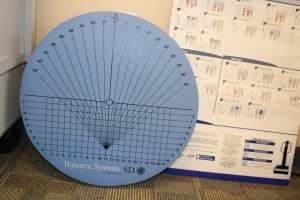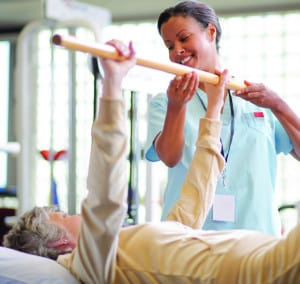Therapy can be a pathway to independence and better quality of life after a stroke. The key is to take a comprehensive approach with physical, occupational and speech therapy.

Ambrosia Scott, DPT, LAT, CCI, says speech, occupational and physical therapy all benefit stroke patients.
Ambrosia Scott, DPT, LAT, CCI, outpatient rehabilitation manager for Regional One Health, said the Center for Rehabilitative Medicine at the East Campus offers all three. She explained how they work together to meet stroke patients’ needs.
Start with speech
Scott described speech therapy as a core treatment. “It lays the foundation for us to help with gross motor and fine motor skills,” she explained. “Speech therapists are our saving grace because we may struggle to communicate with our patients. They can tell us techniques to try or tactile cues to use.”
Stroke patients can struggle to communicate for several reasons:
- Slurred or slow speech
- Memory problems that make it hard to follow commands
- Expressive aphasia: Knowing the right word but being unable to say it
- Receptive aphasia: Hearing words but being unable to make sense of them
Speech therapists help stroke patients to work through those and other problems. They can also help with swallowing disorders.
Major movements
Physical therapy for gross motor skills is also crucial, Scott said. Therapists can help patients with paralysis on one side of the body or loss of use of a limb. They focus on the following:
- Balance
- Coordination
- Flexibility
- Strength
- Transitional movements like turning or stepping up or down
Therapy both builds strength and teaches new ways of doing things. Scott said that can help with fundamental activities like walking or getting in and out of the car.
Activities of Daily Living
Stroke patients can also gain independence by mastering Activities of Daily Living. That’s where occupational therapy comes in. It focuses on fine motor skills that are crucial for many life skills:
- Getting dressed and undressed
- Using the restroom
- Showering
- Combing hair
- Brushing teeth
- Eating
The Center for Rehabilitative Medicine has an Americans with Disabilities Act-compliant kitchen and bathroom for practice. “We’re able to simulate tasks like cooking, washing clothes, ironing, brushing teeth, using the toilet, etc.,” Scott said.
She added therapists can also provide adaptive equipment for those tasks.

Working on balance is key for patients who may have lost use of a limb or have paralysis on one side of the body.
Occupational therapists can even help some patients go back to work in several ways:
- Regaining skills needed to perform job duties
- Adapting a patient’s work environment to their abilities
- Helping the patient find a job they’re able to do
How to get help
Recovery from a stroke can depend on several factors:
- Age
- Health before the stroke
- The side of the brain where the stroke occurred
- The part of the brain impacted by the stroke
Scott said therapy can help for all patients. “Two to three sessions a week is ideal,” she said. “You don’t want to fatigue the patient to the point where their desire to do therapy is reduced.”
